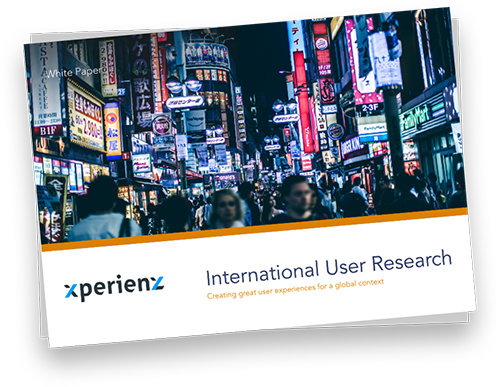 All Articles
All Articles
White Papers
International User Research
Back in the 90s, if McDonald’s had kept its signature product Big Mac when expanding to the Indian market, a country where almost half of the people are vegetarian and the cow is considered a sacred animal, it would certainly have been a total flop. Instead they suited their menu to Indian tastes and culture. So, besides choosing a vegetarian to run their outlets, they changed the beef burger for a new signature product — the Chicken Maharajah Mac.
Companies targeting their products and services beyond the scope of the domestic market need to localise and adapt them to local users’ needs, frustrations and cultures in order to truly satisfy their needs.
International user research can help companies build confidence that their products will be adopted and enjoyed by customers regardless of their culture or geography.
Why conducting international UX research?
User research focuses on understanding user behaviours, needs, motivations and pain points. All the results and insights collected can help designers come up with better products or services that delight users and make them have great experiences. By conducting research organisations can:
- Test an early-stage prototype of a product before spending time and money in full-scale development;
- Identify needs and frustrations of the intended local audiences, leading to innovation opportunities providing solutions for those needs and frustrations;
- Identify country-specific differences that could impact the adoption and usage in that country;
- Understand whether or not the design of the product works well for end users in the target country or countries.
Challenges when conducting international user research
-
Cultural diferences
Will study participants accept female moderators? Do participants show up on time for interviews? When travelling to other countries to conduct research or when running it remotely, it’s important to take into account all the cultural differences specific to that country.
-
Language
Not only it’s important to test the website or the app in the country’s own language, but to conduct the test sessions in the local language as well. The ideal is using a native speaker or a translation service for usability test scripts and for analysing feedback to ensure no valuable insights are lost in translation.
-
Testing time and calendar differences
To ensure the right participants are easy to find, sessions have to be scheduled to suit the time of the local market so they don’t overlap meal times, working and sleeping hours. Also, knowing the local market’s calendar will prevent from conducting research in days when potential participants are enjoying a holiday.
-
Legal requirements
Every country has their own laws and regulations which can affect the way research is conducted and how results can be used. In some countries, it’s mandatory to inform participants beforehand about filming, sound recording and eye tracking and they should be asked to sign a data collection consent before starting the test session.
-
Technical issues
In most developing countries internet coverage and speed might not be suitable for certain types of research, specially remote.
-
Recruiting and incentives
Incentives to persuade potential participants to take part in testing sessions vary from country to country. They should show that participants’ time is valued and they’re mainly linked to the cost of living and the participants’ job.
Choosing how to conduct research internationally
To test their products or services abroad organisations can choose to visit the foreign country, do remote research, have a team from the local office run the research or hire a local UX consultant.
Remote research can be useful for teams with budget and time constraints that prevent them to conduct in-person studies, and if done right, it can provide equally rich insights.
Conducting a user research project spread through multiple companies, countries and timezones entails more risks than at home. Organisations need to seriously consider if they have the right people within their team to conduct proper international research. A team that hasn’t any experience with international projects is more likely to focus on their own biases and assumptions. Hiring a local research team can actually be more cost-effective than deploying a company’s own resources. Organisations can take advantage of local market expertise as research is conducted in the relevant language and local teams are sensitive to local cultural norms.
Across the globe people behave and interact differently based on the culture in which they belong. If a product doesn’t adapt to cultural differences, it will not truly meet users’ needs or create business value. That’s why UX research is important for organisations that seek to create a user experience that works across boarders, cultures and languages. It will provide valuable insights into local users’ behaviours, needs and preferences and lead to the creation of user-centred products and services that people will actually use and advocate for.

International User Research
It’s crucial that organisations expanding to foreign markets undertake global UX research to ensure their products are adjusted to local users needs, goals and culture.

The email we sent you to webb@hotmail.com has the link to download our White Paper.
If you don’t see it immediately, please check your spam folder.
Thank you.

